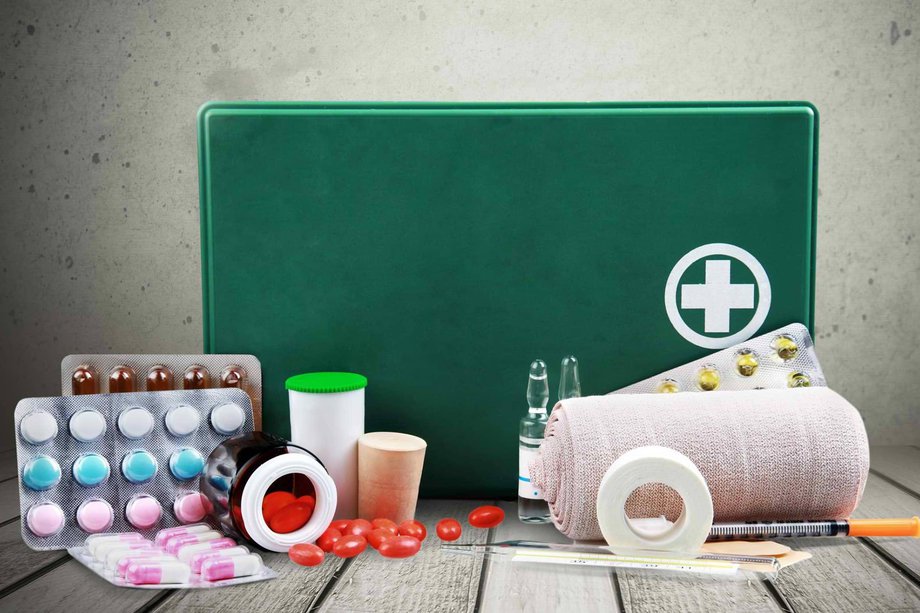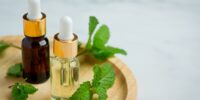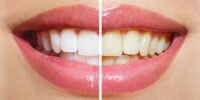How To Use Homeopathy For First Aid And Minor Injuries?

Homeopathy is a holistic approach to healthcare that has gained popularity in recent years. It is a system of medicine based on the principle of ‘like cures like,’ where highly diluted substances are used to stimulate the body’s natural healing abilities.
While homeopathy is not a substitute for professional medical care, it can be a valuable tool in managing first aid and minor injuries. This article explores the principles of homeopathy and how it can be used to treat sprains, strains, cuts, wounds, bruises, burns, insect bites, stings, allergies, and skin irritations. Additionally, it provides guidance on using homeopathy in common first aid situations, along with safety precautions and when to seek professional medical help.
By understanding the basics of homeopathy and its application in first aid, individuals can be better equipped to address minor injuries and promote their own well-being.
Key Takeaways
- Homeopathy is a holistic approach to healthcare that can be used for first aid and minor injuries.
- Homeopathic remedies are prepared through dilution and potentization to enhance healing properties and minimize side effects.
- Different homeopathic remedies are recommended for specific types of injuries, such as sprains and strains, fractures and bone injuries, cuts and wounds, burns and scalds, insect bites and stings, and minor allergies and skin irritations.
- It is important to consult with a healthcare professional or homeopath for appropriate remedies and to seek professional medical help when necessary.
Understanding the Principles of Homeopathy
The principles of homeopathy can be comprehended by examining the fundamental concepts and theories that underpin this alternative medical system.
Homeopathy is based on the principle of ‘like cures like,’ which suggests that a substance that causes symptoms in a healthy person can be used to treat similar symptoms in a sick person. This concept is known as the Law of Similars.
Another principle of homeopathy is the concept of individualization, which emphasizes the importance of treating the whole person rather than just the disease.
Homeopathic remedies are prepared through a process of dilution and potentization, where the substance is repeatedly diluted and shaken vigorously. This process is believed to enhance the healing properties of the remedy while minimizing any potential side effects.
Overall, understanding these principles is crucial to effectively using homeopathy for first aid and minor injuries.
Treating Sprains and Strains with Homeopathic Remedies
Sprains and strains can be effectively addressed through the application of homeopathic remedies. Homeopathy focuses on treating the individual as a whole, taking into consideration their unique symptoms and characteristics.
Arnica montana is a commonly used remedy for sprains and strains. It is believed to reduce pain, swelling, and bruising associated with these injuries.
Ruta graveolens is another remedy frequently used for ligament and tendon injuries. It is thought to promote healing and relieve pain.
Symphytum officinale, known as comfrey, is often recommended for fractures and bone injuries.
Homeopathic remedies are typically administered in low doses and are diluted to minimize the risk of side effects.
It is important to consult with a qualified homeopath or healthcare professional before using homeopathic remedies for sprains and strains.
Healing Cuts and Wounds with Homeopathy
Healing cuts and wounds can be effectively addressed using homeopathic remedies that focus on promoting natural healing and reducing pain and inflammation associated with these injuries. Homeopathy offers a range of remedies that can be used to aid in the healing process of cuts and wounds. Arnica Montana is commonly recommended for its ability to reduce pain and swelling, while Calendula officinalis is known for its antiseptic properties and ability to promote wound healing. Hypericum perforatum can be used to address nerve pain and prevent infection, while Silicea can help to expel foreign objects from the wound. These remedies can be taken orally or applied topically in the form of creams or ointments. It is important to consult with a qualified homeopath or healthcare professional for guidance on the appropriate remedy and dosage for individual cases.
| Remedies | Benefits | |||
|---|---|---|---|---|
| Arnica Montana | Reduces pain and swelling | |||
| Calendula officinalis | Antiseptic and promotes wound healing | |||
| Hypericum perforatum | Addresses nerve pain and prevents infection | |||
| Silicea | Expels foreign objects from the wound | Silicea | Expels foreign objects from the wound and promotes faster healing |
Soothing Bruises and Contusions with Homeopathic Treatments
Soothing bruises and contusions can be effectively achieved through the application of homeopathic treatments that aim to reduce pain and inflammation associated with these injuries. Homeopathic remedies can provide relief and promote healing by stimulating the body’s natural healing processes.
Here are three homeopathic treatments that can help soothe bruises and contusions:
- Arnica montana: This is a commonly used homeopathic remedy for bruises and contusions. It can help reduce pain, swelling, and discoloration associated with these injuries.
- Bellis perennis: This remedy is specifically indicated for deep bruises and contusions, particularly in the abdominal region. It can help alleviate pain, soreness, and promote healing.
- Hypericum perforatum: This remedy is beneficial for bruises and contusions that involve nerve damage or are located in areas rich in nerves, such as fingers or toes. It can help relieve pain and promote nerve healing.
When using homeopathic treatments for bruises and contusions, it is important to consult with a qualified homeopath for proper dosing and individualized treatment.
Relieving Burns and Scalds with Homeopathy
Relieving burns and scalds can be achieved with the application of homeopathic remedies that aim to alleviate pain and promote healing of these thermal injuries. Homeopathic treatments for burns and scalds focus on reducing pain, preventing infection, and promoting tissue regeneration. Some commonly used remedies include Cantharis, Urtica urens, and Calendula. Cantharis is known for its ability to relieve intense burning pain and blistering. Urtica urens is helpful in reducing the stinging and burning sensation caused by burns. Calendula, a well-known remedy for wound healing, can be used topically as a cream or ointment to promote the healing process. It is important to note that homeopathic remedies should be used as a complementary treatment along with conventional medical care for severe burns or scalds.
| Remedy | Indications | Dosage |
|---|---|---|
| Cantharis | Intense burning pain, blistering | 30C every 15 minutes for up to 6 doses |
| Urtica urens | Stinging and burning sensation | 6C or 30C every 2 hours for up to 6 doses |
| Calendula | Promotes wound healing | Cream or ointment applied topically 2-3 times daily |
Managing Insect Bites and Stings with Homeopathic Remedies
Managing insect bites and stings can be effectively accomplished through the use of homeopathic remedies that aim to alleviate discomfort and promote the healing process of these common occurrences. Homeopathy offers various remedies that can provide relief from the itching, pain, and swelling associated with insect bites and stings.
Common remedies include Apis mellifica, Ledum palustre, and Hypericum perforatum. Apis mellifica is often used for bee and wasp stings, as it helps reduce the swelling and burning sensation. Ledum palustre is recommended for puncture wounds caused by insects, such as mosquitoes and ticks, as it helps prevent infection and reduce swelling. Hypericum perforatum is commonly used for bites and stings that are accompanied by intense pain.
It is important to consult a qualified homeopath to determine the most appropriate remedy and dosage for each individual case.
Addressing Minor Allergies and Skin Irritations with Homeopathy
In the previous subtopic, we discussed the management of insect bites and stings using homeopathic remedies. Building upon that, we will now explore how homeopathy can be utilized to address minor allergies and skin irritations.
Homeopathy, a holistic approach to healing, aims to stimulate the body’s innate healing abilities by using highly diluted substances. When it comes to minor allergies and skin irritations, homeopathic remedies are selected based on the individual’s specific symptoms and overall constitution.
Common remedies used in such cases include:
- Apis mellifica for allergic reactions with swelling and redness
- Rhus toxicodendron for itchy rashes aggravated by scratching
- Urtica urens for hives and allergic skin conditions
These remedies, when carefully chosen and administered in accordance with homeopathic principles, can help alleviate symptoms and support the body’s natural healing process.
Using Homeopathy for Common First Aid Situations
Exploring the application of homeopathic remedies for common emergencies and accidents can provide valuable insights into alternative approaches to addressing immediate health concerns. Homeopathy offers a natural and holistic approach to first aid situations, focusing on stimulating the body’s inherent healing abilities. It can be used for various common first aid situations such as minor burns, cuts, bruises, and sprains. Homeopathic remedies like Calendula can be used topically for wound healing, while Arnica can help reduce swelling and bruising. Hypericum can be useful for nerve injuries, and Ledum can be employed for puncture wounds. These remedies can be administered in pellet or liquid form, and the appropriate potency and frequency of dosage should be determined based on the severity and individual response to treatment.
| First Aid Situation | Homeopathic Remedy | |||
|---|---|---|---|---|
| Minor Burns | Calendula | |||
| Cuts | Calendula | |||
| Bruises | Arnica | |||
| Sprains | Arnica | First Aid Situation | Homeopathic Remedy | |
| ——————— | ——————– | |||
| Minor Burns | Calendula | |||
| Cuts | Calendula | |||
| Bruises | Arnica | |||
| Sprains | Arnica |
The choice of homeopathic remedy for each situation may vary depending on the severity and individual response to treatment. It is important to consult with a healthcare professional or homeopath to determine the most appropriate remedy for each specific case.
Safety Precautions and When to Seek Professional Medical Help
To ensure the well-being of individuals and promote effective treatment, it is crucial to adhere to safety precautions and seek professional medical help when necessary.
While homeopathy can be used for first aid and minor injuries, it is important to understand its limitations and when professional medical help is required.
Safety precautions should be followed, such as keeping homeopathic remedies out of reach of children and away from heat and moisture.
It is also important to consult a healthcare professional before using homeopathy, especially if there are pre-existing medical conditions or if the symptoms are severe.
Homeopathy should not be used as a substitute for emergency medical care in serious or life-threatening situations.
Seeking professional medical help is essential to ensure appropriate diagnosis and treatment, and to prevent any potential complications.
Frequently Asked Questions
Can homeopathy cure serious injuries or illnesses?
Homeopathy is not recognized as an effective treatment for serious injuries or illnesses by mainstream medical authorities. It is important to consult a qualified healthcare professional for appropriate medical care in such cases.
Are there any side effects or risks associated with using homeopathic remedies for first aid?
There may be potential side effects or risks associated with using homeopathic remedies for first aid. Further research is needed to determine their safety and effectiveness in treating minor injuries.
Can homeopathy be used for first aid on children and infants?
Homeopathy can be used for first aid on children and infants. It is important to consult a qualified homeopath for appropriate dosages and remedies, as well as to ensure safety and efficacy.
How long does it typically take for homeopathic remedies to start working?
The time it takes for homeopathic remedies to start working can vary depending on the individual and the specific remedy. Some individuals may experience immediate relief, while others may require several doses over a period of time.
Are there any specific storage or handling requirements for homeopathic remedies?
There are specific storage and handling requirements for homeopathic remedies. They should be kept in a cool, dry place away from direct sunlight, strong odors, and electromagnetic fields to maintain their efficacy.









